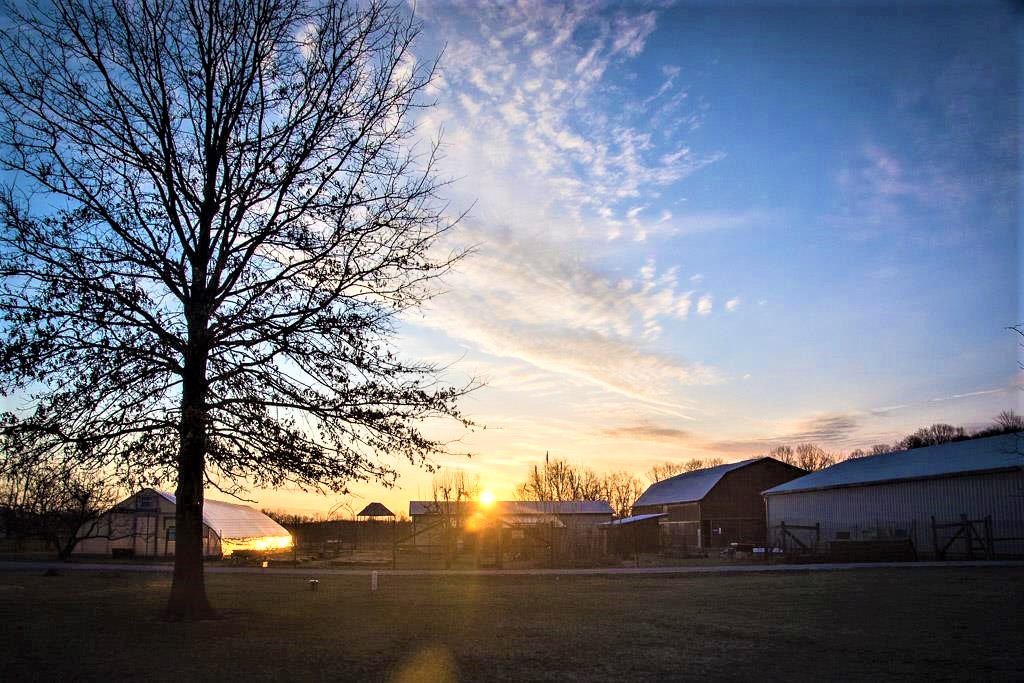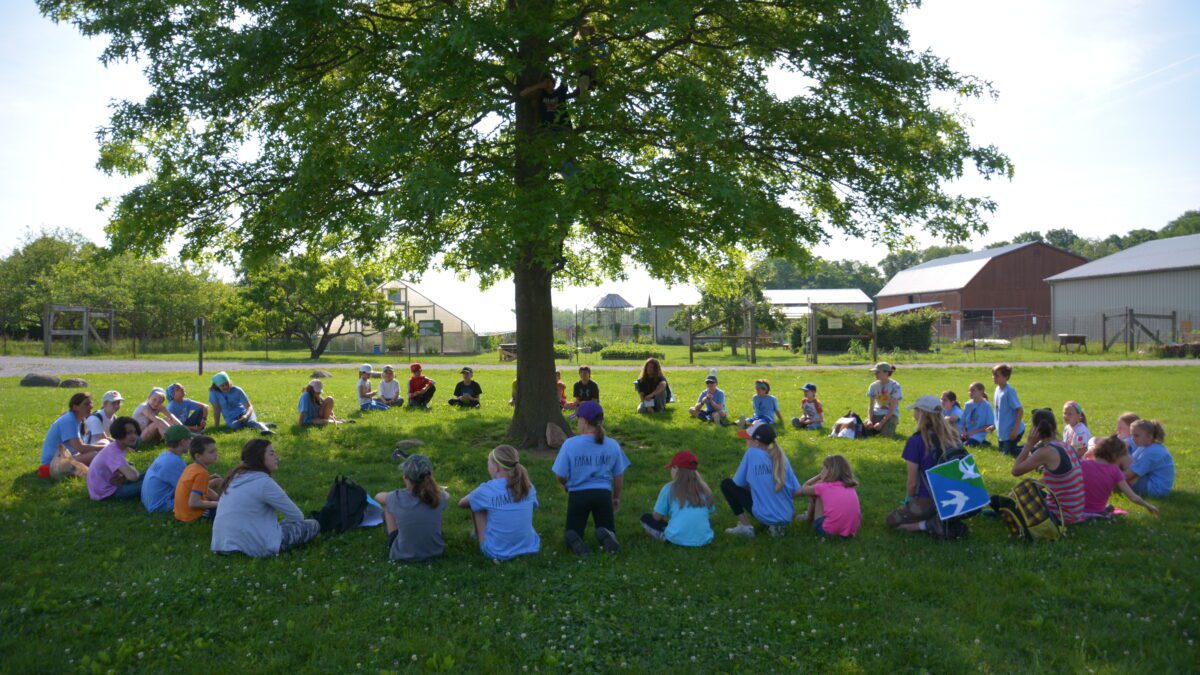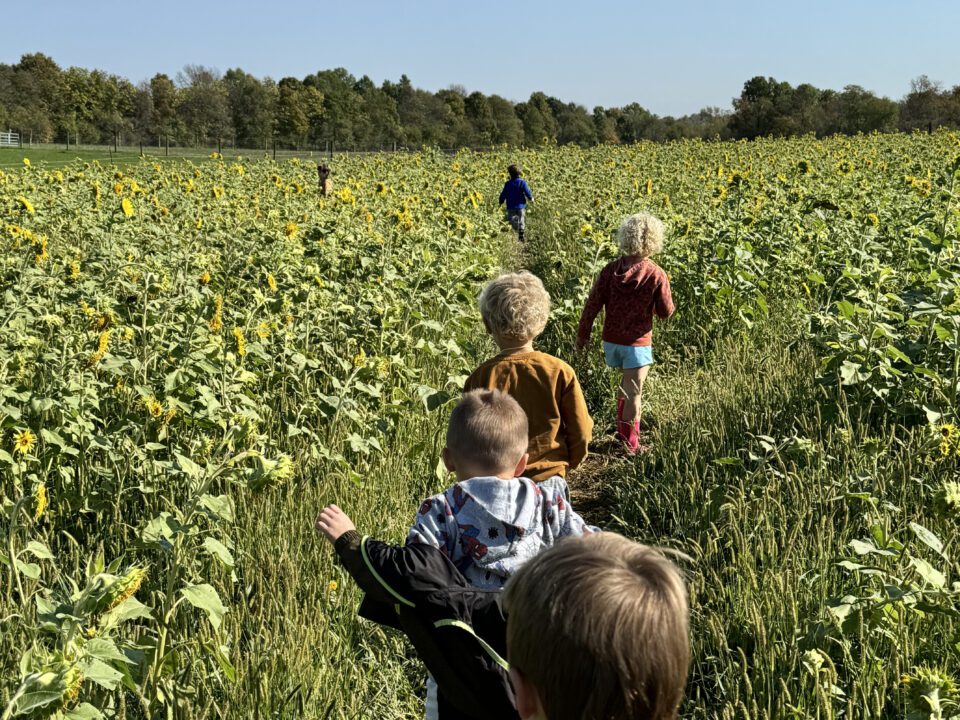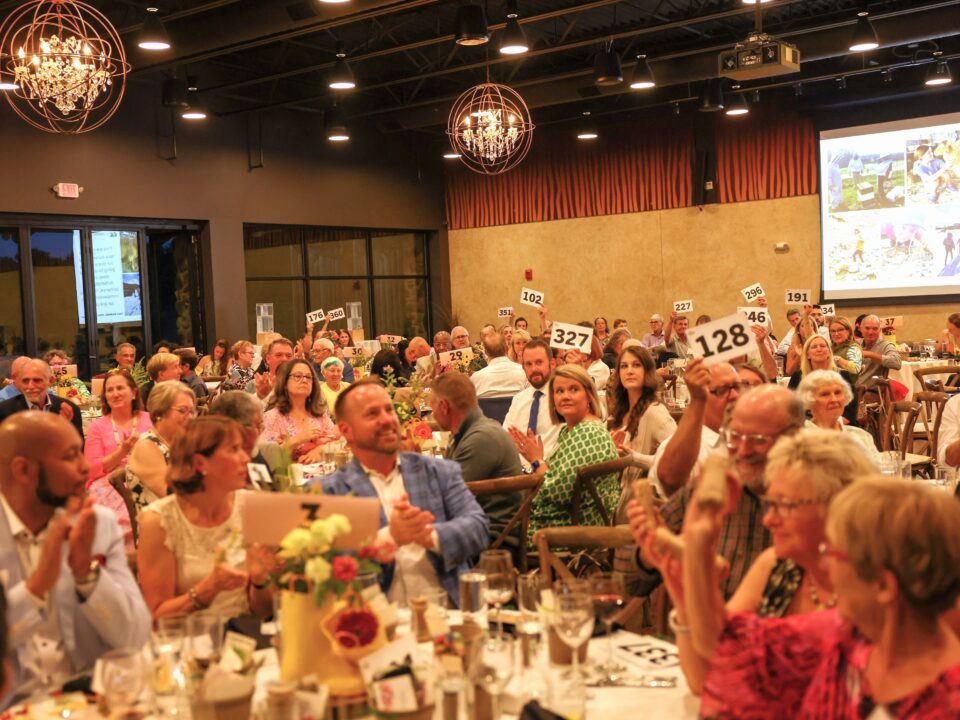
Clarabelle Born Without Fanfare at Stratford
April 16, 2016
Bumper Year for Honey and Hay at Stratford Ecological Center
June 18, 2016Published in The Delaware Gazette, May 18, 2016
The tree canopy is closing over the last of the blooming wild flowers in the Preserve at Stratford Ecological Center on Liberty Road. This spring has seen an explosion of green carpeting the woods following the mild winter, with the white trillium, wild geraniums and wild hyacinths flowering to perfection on the Creek and Well Loop Trails. Even the less productive Sugar Shack Trail was not to be outdone, as strong-smelling Anise, Buttercups, Ladies Bedstraw, and Solomon’s Seal, to name a few, were discovered during this year’s Earth Day tree planting.
Over the course of five days, ninety volunteers planted 1,300 sapling trees. Each year we plant a variety of species to meet the needs in our woods. Black Locust were installed beside ash trees killed by the ash borer. In wetter areas Button Bush were used to provide erosion control, food and shelter for an extensive range of birds, animals, reptiles, amphibians, and insects. The American Plum, Elderberry, Arrow Wood Viburnum and Sumac were chosen to increase the availability of nectar for pollinators and fruit for birds.
A few 150-year-old trees still remain in our woods, and I don’t doubt this when I look up and see the broad trunk and dense heavy branches. A scale has been developed to calculate the age of a tree according to its growth habit. For instance, larger slow-growing trees like oaks, have an index between 3 and 4. By measuring the diameter of the tree in inches, and multiplying by this index one can fairly accurately calculate the age of the tree. An oak tree measuring thirty inches in diameter would be approximately 120 years old.
The grass fields have flourished. There is no shortage of grazing or set aside for hay. Haymaking will start as soon as the fields dry out after the short heavy rains of the last two weeks. Farmer Jeff has seeded half of field 6 with oats, orchard grass and alfalfa for hay this year. Two of the five acres were sown with buckwheat, to provide food for our ever increasing bee colonies.
Healthy new rhubarb starts were planted by the Tuesday crew in a well-worked and composted area near the asparagus in field 3. We learned to create a ‘frothy’ soil for rhubarb, after our last attempt failed in less than desirable conditions. Believe it or not, young rhubarb harvested in the spring and gently stewed can be deliciously sweet, and justifies the high price at the market. The nearby strip of annual rye is ready to plow under, and provide humus for a crop of buckwheat, sunflowers and two rows of field corn. The close proximity to the orchard hens and Children’s Garden, where many visitors gravitate, will make it easier for them to watch the corn’s development.
We have lowered our goat numbers by four but increased our available meat, as Starvin Marvin, Bo Bo and two yearlings finally left us for the processors. Gunther our oldest buck will also move on soon, either back to his first owner, or to the processor to provide tasty ground sausage.
Sad as it is to say goodbye to these animals, we have been saying hello to more chicks hatched in the classroom incubator, and hopefully soon under the brooding Speckled Sussex hens in the Children’s Garden coop. Ten days ago Pumpkin, a Jersey cow, gifted us with a bull calf born in the North Pasture. She fooled us! Last year she gave birth to Knox a bull calf, he was still suckling when she ran with the bull, and we really did not expect her to conceive. Another new addition is Tulip. Her appearance coincided with the solitary tulip at the lane entrance. Tulip is a tan-colored pet rabbit whose purpose is to produce nourishing droppings for our worm bin, and of course she is a hit with the young folk.
The school children, who arrive by the busload for tours, never cease to amaze their guides. Take the cross-looking kindergartner who continuously hung back, even at lunch in the gazebo. Afterwards the group visited Tulip, and suddenly she asked me if she could lead the group into the woods. Excuse the pun but she never looked back, and I had to keep checking this smiling child to see if she were the same one! Another, the popular activity of looking for four-leaf clovers in the pasture. A lucky little boy was holding his in the air, as he held out his other hand to feed a hen with grain. In a flash the hen grabbed the clover instead, and I had a hard time stopping the flood of tears!
Farm and Nature tours end this month and begin again when school resumes. The guides get together for a potluck, and Stratford’s Volunteer Coordinator Jane Walsh arranges an enrichment opportunity as a small way of thanking everyone. This month John Tetz will lead a walk to view the extensive renovations at the historic cemetery on the property, and share future plans. Our summer farm camps are full, but there continues to be other opportunities to visit during the summer.
Starting on Saturday, June 11 Beekeeper Dave is offering the first of three Family Hive Tours between 9-11 am. at a cost of $12 per family. Further details and registration can be found on line. The annual Honey Bee Festival is scheduled for Saturday, June 25 from 10–4 pm and costs $5/person or $15/family. Story Time on the Farm continues every 2nd Tuesday from 10-11 am for $5/family. The Photography Club meets the 3rd Thursday from 1-3 pm for $20/year. Adults are invited to bring interested children, especially as we offer a Photo Contest for Kids which runs through August. No registration is necessary for the Bee Festival, Story Time or Photography Club.
Whether you choose a particular event, or come out during open hours, we hope you enjoy a happy and healthy summer at Stratford!
Pauline Scott is a farm and nature guide at Stratford Ecological Center, 3083 Liberty Road, Delaware. She can be reached at 740-363-2548 or by email at info@stratfordecologicalcenter.org. Website: StratfordEcologicalCenter.org





